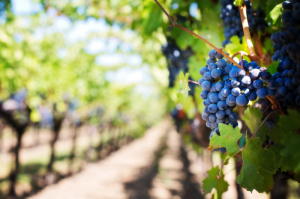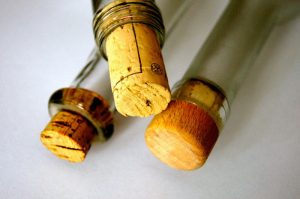How to store archival wines and not ruin them
Do you know how to have an authentic experience of southern Moravia right at home? You don’t need kilometers of cellars or barrels: archiving wine is a science, but not rocket science – with a little effort, anyone can manage it. In addition, wine stored in archives also makes an original gift.

Luxurious wine requires luxurious conditions
It’s no wonder why archival wines are so popular: a mature wine is fuller and more harmonious, and has acquired an improved taste, aroma, and overall quality. And it would be a great pity to lose this quality, don’t you think? This is why you should pay attention to all the conditions the wine requires. These include an optimal temperature and moisture in the air, a horizontal position, stability, darkness, and the least possible air flow. Read the 6 basic rules for properly archiving wine below.
1. How to store archival wine: temperature plays the main role
Almost everyone knows temperature plays a role in storing wine – we chill white wine in the refrigerator before serving it, and we pour red wine at a temperature of up to 18°C. But what about archiving it? Ideally, the temperature in the room where you archive your wine should be between 10 and 15 °C. If your wine is too cold it can lose some of its aroma. However, if it’s too warm the aroma may actually become rather aggressive. Additionally, the temperatures shouldn’t be fluctuating in this room. If you have to choose between two rooms where the first one is usually at the right temperature but there are sometimes sudden temperature changes, and the second room is a bit warmer but the temperature is stable, choose the second one.
2. Archiving wine: always lying down
Many of us just stick our wine in the pantry or standing up in the door of the fridge. But we don’t realize how this harms it – in the worst cases the wine may even be spoiled. How is this possible? We can blame the cork, which should always remain soaked – so we provide for this by always storing wine bottles horizontally. The cork thus maintains its elasticity and harmful oxygen doesn’t get into the bottle. If it does get in, our wine will suffer premature aging. So, if you want to archive your wine, make sure it’s lying down.
3. When archival wine meets with odors
Cork has another undesirable quality – it absorbs odors. So be careful what you’re storing near your wine. It isn’t going to be friends with strongly aromatic foods. Also try to avoid storing it near disinfectants and other chemicals – the fumes from cleaning products that can rush out as soon as you open the wine will probably not make you happy. It’s also not idea to store wine in a cellar near fruits and vegetables because even their aromas can influence the quality of your wine.

4. Luxury wine is particular about humidity
The humidity range that best suits wine is between 60 and 70 %. This is about 20 % higher than the recommended humidity in other rooms. Your wine isn’t going to like it in the living room.
5. You can’t archive wine in a home gym
When wine is archived, small particles settle to the bottom of the bottle. If you continually shake the bottle, move it, or transport it somewhere, the particles don’t settle and the wine loses its characteristic bouquet. One of the differences between a young wine and an archival one is how quickly you should drink it up after opening the bottle. A young wine will last for several days after opening if you keep it in the refrigerator. But beware with a mature wine – it oxidizes very rapidly, so even a half hour after opening the bottle you can start with your comparative tasting and notice how the wine changes over time.
6. Archival wine has to be in the dark
In the previous paragraph you learned that wine doesn’t like to be moved around. Another thing that it doesn’t like is light – neither sunlight nor lightbulbs. This is because the UV wavelengths in light accelerate the processes of maturation and oxidation.
Now you know how to archive wine, so let’s look at the most important part – how to choose a wine for archiving.
The basis of archiving wine: how to choose the right wine
There’s wine, and then there’s wine – and not every wine is suitable for archiving. Which wines can be safely archived?
The wine’s label can give you a clue. Take a look at the amount of sugar-free extract and residual acid. The more of them the wine contains, the better it will become after archiving.
You should also pay attention to the cork – archival wines should be sealed with a high quality all-natural cork.
A wine’s vintage and the wine growing region also reveal a lot about whether archiving it is a good idea. Each vintage and each soil are specific, and it sometimes happens that even the best wine doesn’t turn out so well in a certain vintage.
In short: the suitability of wines for archiving is influenced by many factors, and only an expert can determine it with 100% certainty. So, if you don’t want to leave it up to chance, choose a wine that is intended for archiving. Which wines are they?

White wines:
- 2015 Mercurey, Premier Cru Classé from the winery Les Héritiers Saint-Genys – this luxurious wine comes from the most famous winemaking region in the world – Burgundy. It’s a dry Chardonnay and the main thing that’s outstanding about it is that you can open it up any time. The winery guarantees the possibility of archiving it for a minimum of 15 years, but it’s already excellent now. If you buy more bottles, you can follow how its taste and aroma change and develop over the years.
- 2016 Soave Runcata from the Tenuta di Corte Giacobbe winery – a dry white wine that never fails – it was awarded the highest Tre bicchieri rating in Gambero Rosso’s prestigious catalogue of the best Italian wines. It will last at least 20 years in a cellar, so if one of your loved ones is expecting a baby you can offer joy twice – to the parents when their child is born, and to the child on their eighteenth birthday when you open the wine together.
- 2017 Soave Runcata from the Tenuta di Corte Giacobbe winery – it’s a younger brother (by one year) of the wine described above. This one also boasts the highest Italian rating of Tre bicchieri.
Red wines:
- 2013 Amarone della Valpolicella from the Dal Cero winery – a dry wine that has been decorated with several awards. It acquires its nontraditional taste and aroma thanks to its traditional production with partially dried grapes. How long can you archive it? It will last at least 30 years.
- 2017 Santenay Les Héritiers from the Les Héritiers Saint-Genys winery – A luxurious French wine from the Pinot Noir variety that comes from the area around the village Chassagne-Montrachet. You’ll be bringing a piece of France home with you in this wine.
Repetition is the mother of wisdom, so let’s quickly recapitulate: if you want to archive wine, you must:
- choose the right wine;
- maintain a stable temperature between10 and 15 °C and a humidity of 60-75 %;
- archive the wine in a horizontal position;
- move the bottle as little as possible;
- keep the wine in the dark;
- avoid archiving wine near aromatic foods or chemicals.
Altogether, wine is not that difficult to understand. It likes to lie down and enjoy peace and quiet, and it doesn’t like to feel too hot or too cold. And if we take good care of it, it will return the favor a hundredfold. So let’s give it a try – archive your own wine. And if you don’t want to do the archiving yourself, why not try a Barolo that has matured for at least 10 years and is in the best condition?
Select wines. In your email.
once every month. You can look forward to our recommendations, interesting content, and great offers for your archive for your archive.
By sending an email you agree to the Terms and Conditions for Protection of Personal Data



